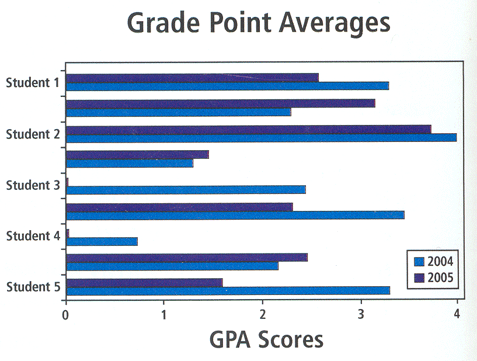Does
inclusion include students with disabilities and
teachers?
Summary
The
purpose of this study was to research and observe
the implications of No Child Left Behind (NCLB)
and its effect on middle school students. The question
“Does inclusion include students with disabilities
and teachers?” is very important because as we attempt
to implement the mandates of NCLB we are faced with
many challenges. These challenges affect the instruction
of our students and the teacher’s ability to help
these students meet success in the inclusive setting.
This
study came about after my school district decided
to integrate resource students into an inclusive
setting. This reorganized our special education
department, our school, and the instructional strategies
used in the classroom. I focused my study on students
who were once a part of the resource team but are
now in the inclusive setting. I interviewed these
students, talked to their current teachers, and
researched current and past grades in the core subjects.
I also took a look at the teachers and their reaction
to this change. Through interviews and observations,
I learned of their years of experience and different
methods of instruction used in the classroom.
As
I began to collect data and researched the information,
I found that students’ motivation and the teacher’s
ability to keep students actively engaged was the
key. Students who had succeeded in the resource
setting had also succeeded in the inclusion setting.
Their success was internal, and the teacher’s ability
to keep the students engaged throughout the lesson
kept the students motivated. Teachers, on the other
hand, were not really afraid to teach students with
disabilities but were concerned that they were not
adequately trained to handle the specialized needs
of special education students.
Through
the interviews with the students, I was able to
learn more about their feelings about inclusion
and special education in general. Some students
were elated to be off the resource team because
of the stigma that was attached to special education.
Some of the students not succeeding were motivated
but had home issues that inhibited their ability
to meet success in the classroom.

No Child
Left Behind has mandated that school districts and
states that receive federal funds implement changes
in order to increase the academic achievement of
all students but especially minorities and students
with disabilities. In light of that mandate, I have
recommended some steps that I believe need to be
implemented in the schools.
RECOMMENDATIONS
- States and school districts must replace proficiency
targets based on actual school achievement.
- We
must measure students’ academic growth in relation
to their previous academic progress.
- We must use multiple indicators to assess student
scores.
- Assessments
should reflect the curriculum being taught in
the school.
- Policy
makers must ensure that assessments are aligned
to state standards, are valid and reliable, and
assess higher-order thinking.
- We
should decrease the amount of assessment given
to students.*
*
National Education Association. Delaware Secondary
Education Act. Nov./Dec. 2004, p. 15.
|